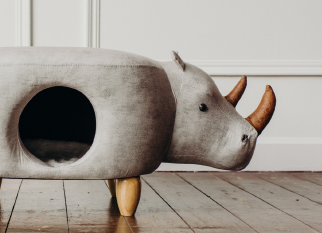How to improve the heat dissipation performance of power cord
Power cords play a vital role in modern electrical equipment. Their core function is to effectively transmit electricity from the socket to various electrical devices. Power cords will inevitably generate heat during operation. Overheating will not only affect the normal operation of the equipment, but may also cause safety hazards. Therefore, improving the heat dissipation performance of power cords has become an important consideration in design and application.
The criticality of material selection
The heat dissipation performance of power cords depends largely on the thermal conductivity and insulation of the selected materials. The following are professional suggestions for material selection:
Conductor materials: Copper and aluminum are the most commonly used conductor materials in power cords. Copper has excellent electrical and thermal conductivity, so copper power cords are obviously a more ideal choice in high-load application scenarios. Although aluminum power cords are favored for their lightness and low cost, copper power cords can provide better heat dissipation performance under high temperature and high load conditions, thereby ensuring the safety and stability of the equipment.
Insulation materials: The thermal stability and thermal conductivity of the insulation material also have an important impact on the heat dissipation performance of the power cord. Selecting insulation materials with good thermal stability (such as polyvinyl chloride PVC or cross-linked polyethylene XLPE) can effectively prevent high temperature damage to the power cord and significantly improve heat dissipation efficiency.
Scientific selection of wire diameter
The wire diameter of the power cord directly affects its current carrying capacity and heat dissipation performance. Thicker power cords can carry more current while generating less heat, thereby reducing the risk of overheating. It is crucial to reasonably select the wire diameter of the power cord according to the power requirements of the load to ensure that it operates efficiently within a safe range. In addition, following national or regional electrical standards (such as NEC, IEC, etc.) to select the appropriate wire diameter will help ensure the safety and heat dissipation performance of the power cord.
Optimization of heat dissipation design
In the design of power cords, improving heat dissipation performance can be achieved through a variety of design methods:
Heat sink design: Adding a heat sink around the power cord is an effective way to improve heat dissipation efficiency. The heat sink can expand the heat dissipation area, thereby enhancing the heat dissipation effect.
Air circulation: When designing, the wiring method of the power cord must be fully considered to ensure that there is enough air circulation around it. Avoid binding or entanglement of power cords to avoid affecting heat dissipation and causing overheating.
Quality selection of plugs and sockets
The plugs and sockets of the power cord will also generate heat during the current transmission process, so choosing high-quality plugs and sockets is crucial to improving heat dissipation performance:
Good contact: High-quality plugs and sockets can ensure good electrical contact and reduce contact resistance, thereby reducing heat accumulation caused by poor contact and ensuring the stability of the equipment.
Material selection: Selecting plug and socket materials with good thermal conductivity, such as plugs and sockets made of copper alloy materials, can effectively improve conductivity and heat dissipation, and further enhance overall safety and reliability.


 English
English русский
русский 中文简体
中文简体 Español
Español













